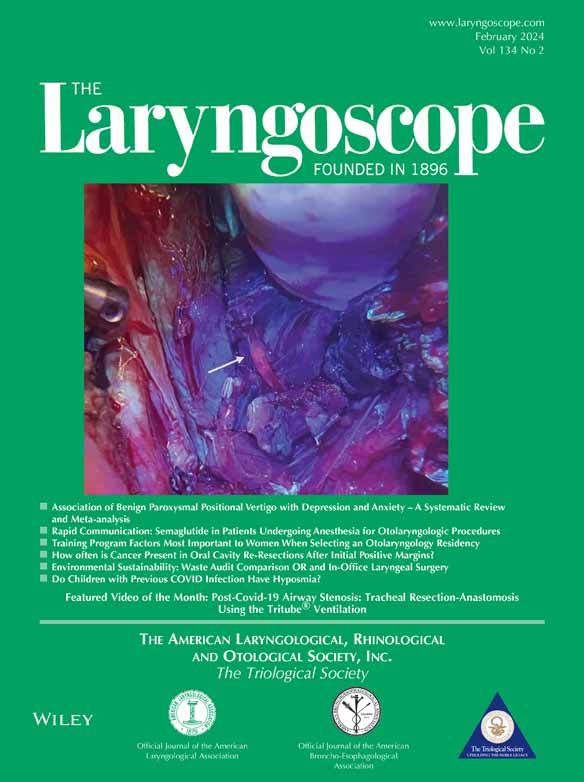Supraorbital Rim and Roof Reconstruction with Vascularized Fascia Lata and Autogenous Rib Graft
The authors have no financial disclosures or conflicts of interest to disclose.
Presented as podium presentation at Triological Society 2023 Combined Sections Meeting, January 26–28, 2023, Coronado, CA.
Abstract
Objective
Describe a novel technique for reconstruction of complex defects involving supraorbital rim and orbital roof.
Methods
Retrospective chart review and description of surgical technique.
Results
Four patients underwent tumor resection with neurosurgery (2 intraosseous hemangioma, 1 meningioma, and 1 ossifying fibroma), with mean tumor size of 42.6 cubic centimeters on preoperative imaging. All defects involved supraorbital rim and orbital roof. Patients were reconstructed with autogenous osseous rib graft for structure and contour and anterolateral thigh fascia lata (ALTFL) free flap to provide robust vascularity to rib bone and as a barrier between skull base dura and the orbit and/or sinonasal cavities. Two patients underwent resection and reconstruction using minimal access incisions, and two underwent major cranial and skull base resections. All flaps are vascularized via superficial temporal vessels. On postoperative follow-up (mean 33.5 months, range 8–48), all patients report no vision change or diplopia, with excellent contour symmetry to contralateral orbit. Follow-up imaging (mean 29.5 months, range 3–48) demonstrated maintained orbital volume and retention of rib bone graft compared to immediate postoperative imaging. There were no complications related to graft use. Minor complications include 1 patient with cerebrospinal fluid leak managed with lumbar drain placement and 1 patient with mild enophthalmos at 7-month follow-up.
Conclusion
We describe a series of patients who underwent a novel technique for reconstruction of complex defects involving supraorbital rim and orbital roof with autogenous osseous rib and vascularized ALTFL-free flap with excellent functional and cosmetic outcomes. This can be accomplished using minimal access techniques to minimize patient morbidity.
Level of Evidence
4 Laryngoscope, 134:654–658, 2024




